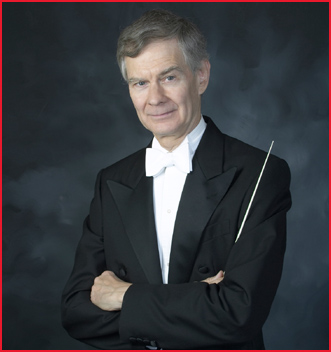From Harris to Hoffer, New England Philharmonic offers a varied feast
Saturday night at the Tsai Performance Center, Richard Pittman and the New England Philharmonic offered the Boston premieres of works by Bernard Hoffer and Brian Robison as well as a vivid performance of a Romantic staple, Rachmaninoff’s Variations on a Theme of Paganini.
But the second half’s opener, Roy Harris’s Symphony No. 3, was a real treat. Harris was one of the most visible composers of the New Deal era, and his Third Symphony, cast in a single movement, stands as his most popular work in the medium.
Premiered by the Boston Symphony Orchestra under Koussevitzky in 1939, the symphony is a blend of Gregorian chant and Renaissance polyphony that is then wrapped up in a spacious harmonic language that would come to characterize the American West in the modern imagination.
The New England Philharmonic has shown itself to be an ensemble on the move. The past few seasons have seen remarkable improvements in ensemble playing. An all-volunteer orchestra, the group currently plays with a fine corporate blend and warm sound when called upon.
That said, Saturday’s performance suffered from a few iffy moments. Pitchy intonation crept into the opening cello line, and the accompanying violin figures that appear midpiece wandered in and out of tune while drowning out otherwise fine contributions from solo oboe and bassoon.
But elsewhere, the orchestra’s playing could have matched the polish of most professional ensembles. Pittman led a performance of stirring vitality, keeping the music moving at a brisk tempo. The fugue featured solid playing from the brass, and strings and winds mined the drama from the symphony’s closing section.
The first half of the concert was dedicated to the premieres, which are both fine examples of orchestral composition.
Brian Robison’s In Search of the Miraculous (2002) takes its title from a book by P. D. Ouspensky. Its form is based on an enneagram, a symmetrical design made from nine equidistant points along a circle that involves overlapping lines. The piece is true to its name and comes off, fittingly, as variations in search of themes. (In fact, the piece involves nine themes that undergo three permutations.)
Robison’s score makes for engaging listening, and the ear is drawn to variations that crisscross, meld into, and layer upon one another. One of Robison’s attractive techniques is his ability to shift from one idea into another seamlessly. Another is his use of vernacular styles. The piece opens with a mambo that pulses in the distance, grinding against repeated woodwind figures. Elsewhere, snarling wind passages are interrupted by jazzy bursts from trumpets and trombones. The piece culminates in a shout-like chorus for brass and percussion set to a disco rhythm. The only quibble about the work is that it stops suddenly, as if Robison had simply ran out of things to say.
The New England Philharmonic has frequently programmed the music of Bernard Hoffer, and Saturday night the orchestra performed his MacNeil/Lehrer Variations (1990).
Based on Hoffer’s theme to the MacNeil/Lehrer Report, the eleven variations offer a musical journey through a wide range of styles that make this imaginative piece one of Hoffer’s finest efforts.
It opens with single-note utterances, which grow gradually into longer statements, as if the theme is piecing itself together. Hoffer is a fine orchestrator and makes economical use of the theme. Some variations spin from as few as two notes. Others involve percussion and piano figures that blaze with rhythm. Additional variations unfold from clouds of bristly dissonances, driving minimalist patterns, and yearning string statements.
The theme reasserts itself several times, most memorably in the center of the piece, where solo oboe and strings play a lyrical line drawn from the end credits music to the original news show.
In both the Robison and Hoffer pieces, the New England Philharmonic played with precision and bold power to make a strong case for each works.
The closer, Variations on a Theme of Paganini, is Rachmaninoff’s most popular and recognizable score. The soloist was Randall Hodgkinson, one of the most accomplished pianists in Boston.
Hodgkinson possesses a sparkling technique, and handled Rachmaninoff’s punishing piano part with aplomb. His playing of the Dies Irae quotation seemed to ring like distant church bells. The lyrical eighteenth variation was especially gorgeous.
Pittman coaxed colorful playing from orchestra to cover Hodgkinson’s phrases in a soft bed of accompaniment. The performance marked one of the orchestra’s most musical efforts in recent seasons. The audience agreed, and warm applause brought Hodgkinson and Pittman back to the stage for repeated bows.
Richard Pittman will lead the New England Philharmonic in music by Hertzberg, Berg, Sibelius, and Rakowski 8 p.m. April 30 at the Tsai Performance Center. nephilharmonic.org
Posted in Performances
